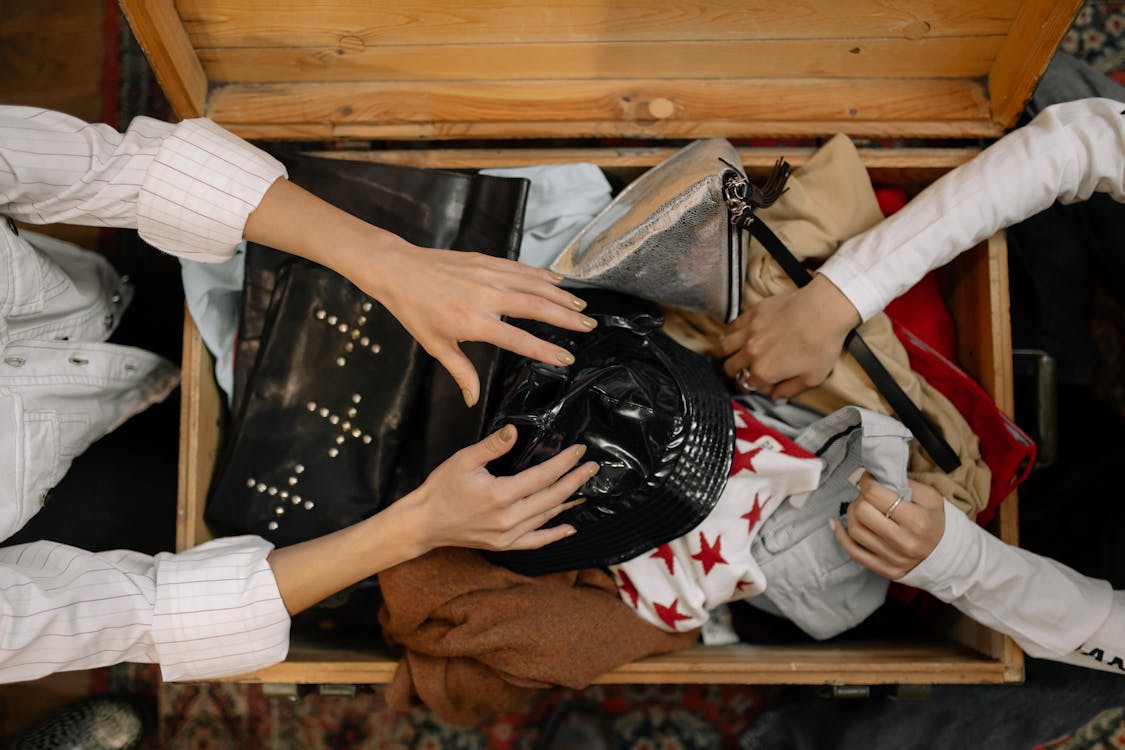The fashion industry is responsible for 10% of global carbon emissions and produces over 92 million tons of textile waste annually. Many clothes end up in landfills or are shipped to developing countries, where they often create more harm than good.
Instead of contributing to this growing crisis, you can take a more sustainable approach to fashion. Responsible clothing donation ensures your old garments go where they are truly needed while recycling and upcycling options keep unwearable textiles out of landfills.
This guide will help you navigate the process of ethical wardrobe recycling, from choosing the right items for donation to finding sustainable alternatives for clothes that can’t be reused.
The Problem With Textile Waste
The fashion industry has become one of the world’s biggest polluters, largely due to fast fashion—the production of cheap, low-quality clothing designed to be worn for a short time and then discarded. The environmental impact of clothing waste is staggering:
- Landfill Overflow– The average person discards about 81 pounds of clothing per year, much of which ends up in landfills. Synthetic fibers like polyester can take hundreds of years to break down.
- Water Waste– Producing a single cotton T-shirt requires over 700 gallons of water, equivalent to three years of drinking water for one person.
- Harmful Chemical Pollution– Textile dyeing is the second-largest water polluter in the world, contaminating rivers and harming ecosystems.
- Excessive Energy Use– The energy used in textile production contributes significantly to global greenhouse gas emissions.
By making thoughtful choices about what to do with unwanted clothes, you can reduce your impact on the environment and ensure your wardrobe has a positive second life.

How to Responsibly Donate Clothes
Many people assume that donating old clothes is always helpful, but not all donations are actually useful. Charities and secondhand stores often receive more clothing than they can handle, leading to excess items being discarded or sent overseas. This can flood foreign markets with cheap, unwanted clothing, disrupting local economies.
To make sure your donations truly make a difference, follow these best practices:
1. Choose the Right Clothes for Donation
Before donating, ask yourself: Would I give this item to a friend? If the answer is no, it’s probably not suitable for donation.
Clothes That Are Always in Demand
- Gently worn, everyday clothing– Casual wear like jeans, t-shirts, and dresses are highly needed.
- Children’s clothing– Kids outgrow clothes quickly, making these items especially valuable.
- Workwear and professional attire– Many organizations help low-income individuals dress appropriately for job interviews.
- Seasonal clothing– Winter coats, scarves, and gloves are essential for those experiencing homelessness in cold climates.
- Shoes in wearable condition– Ensure they are clean and not excessively worn.
Clothes That Should NOT Be Donated:
- Torn, stained, or overly worn clothing– If it’s too damaged for you to wear, it’s too damaged to donate.
- Used socks and undergarments– Most organizations do not accept these unless they are brand new.
- Fast fashion items in poor condition– Cheaply made clothing that falls apart quickly is often unsellable and becomes waste.
2. Find the Right Charity
Not all donation centers operate the same way. Some directly provide clothing to those in need, while others sell donations to fund community programs. Choose an organization that aligns with your values and ensures your clothes are used effectively.
3. Prepare Your Clothes for Donation
To ensure your donation is helpful:
- Wash and clean all clothing before donating. Charities don’t have the resources to launder items.
- Fold or neatly pack your clothes. Dumping wrinkled clothes in a bag makes them harder to sort.
- Sort by category. Separating men’s, women’s, and children’s clothing helps organizations distribute items efficiently.
- Repair minor damage. If a button is missing or a seam is loose, fix it before donating.

What to Do With Clothes That Aren’t Suitable for Donation
If your clothes are too worn out to donate, don’t throw them away! There are several eco-friendly alternatives to landfill disposal.
1. Use Textile Recycling Programs
Many brands and organizations recycle old clothing into insulation, industrial materials, or even new garments. Many cities also have designated bins for fabric recycling.
2. Repurpose or Upcycle Old Clothes
Get creative with worn-out clothing by upcycling it into something new!
DIY Upcycling Ideas:
- Turn old t-shirts into cleaning rags – A great alternative to disposable paper towels.
- Make a patchwork quilt from old fabric.
- Convert jeans into tote bags or purses.
- Use old sweaters to create pet beds or pillows.
- Cut worn-out socks into hair ties or dusting cloths.
Upcycling not only reduces waste but also allows you to give your clothes a second life in a new form.
3. Host a Clothing Swap
Instead of donating, consider swapping clothes with friends or family. Organizing a clothing swap is a fun, sustainable way to refresh your wardrobe without buying new clothes.
How to Host a Successful Clothing Swap:
- Invite friends with different styles and sizes to maximize variety.
- Set guidelines (e.g., clothes must be clean and in good condition).
- Organize items by category for easy browsing.
- Donate unclaimed items to charity afterward.

Support Sustainable Fashion Moving Forward
Reducing clothing waste starts with mindful shopping. Supporting sustainable brands and making intentional purchases can help break the cycle of fast fashion.
How to Shop More Sustainably:
- Buy high-quality, long-lasting clothing instead of cheap, disposable fashion.
- Support brands with ethical and environmentally friendly practices.
- Choose secondhand shopping at thrift stores or online resale platforms.
- Follow the one-in, one-out rule – For every new item you buy, donate or recycle an old one.

For a hassle-free and ethical wardrobe recycling experience, consider We Pickup Clothes. Our clothing donation pickup service makes it easy to donate clothes while keeping them out of landfills. With free donation pickup across Illinois, you can schedule a clothing donation pickup from home and declutter effortlessly. Plus, in 2025, we’re giving back even more—donating a meal for every pickup to the Greater Chicago Food Depository. If you’re looking for one of the best places to donate clothes, We Pickup Clothes is a smart, sustainable choice!
Contact us to schedule your pick-up now.




